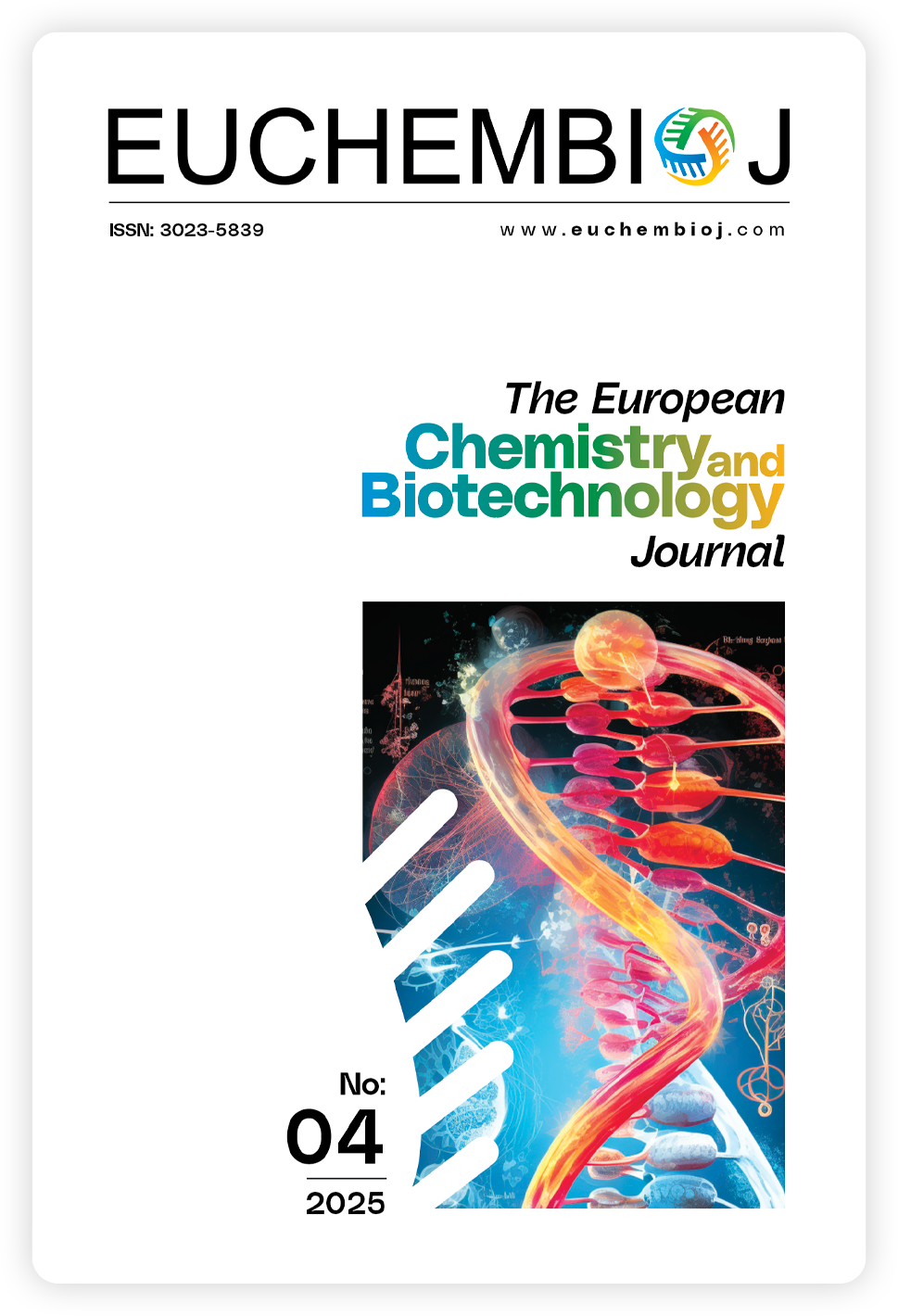Immature morphology of adult-born granule cells alters responsiveness and excitability in a multi-compartmental conductance-based model
DOI:
https://doi.org/10.62063/ecb-57Keywords:
Adult-Born Granule Cells, Mature Granule Cells, Computational Models of Granule Cells, Morphology, Neural DynamicsAbstract
The dentate gyrus of the hippocampus is emerging as a focal target in pattern separation and completion in recent years. Adult neurogenesis in the subgranular zone further provides a unique developmental advantage to this region by supporting the regional activity of newborn granule cells, when required. The contribution of adult-born granule cells (AdB GCs) to the local circuits can be attributed to their differences from embryonic-born mature GCs in terms of their morphological and biophysical characteristics. AdB GCs are highly excitable cells that show sparse activity. In this study, our focus was on how the morphological distinction of early AdB GCs from mature GCs affects their responsiveness. The reduced multi-compartmental conductance-based models are designed on Python environment with Brian2 module with simple Hodgkin-Huxley type Na and K conductances. Our results indicate that the early morphology of AdB GCs is optimized for faster action potential kinetics and higher excitability compared to mature GCs, even without any biophysical differences.
References
Aldohbeyb, A. A., Vigh, J., & Lear, K. L. (2021). New methods for quantifying rapidity of action potential onset differentiate neuron types. PLOS ONE, 16(4), e0247242. https://doi.org/10.1371/journal.pone.0247242 DOI: https://doi.org/10.1371/journal.pone.0247242
Amaral, D. G., Scharfman, H. E., & Lavenex, P. (2007). The dentate gyrus: Fundamental neuroanatomical organization (dentate gyrus for dummies). Progress in Brain Research, 163, 3–790. https://doi.org/10.1016/S0079-6123(07)63001-5 DOI: https://doi.org/10.1016/S0079-6123(07)63001-5
Aradi, I., & Holmes, W. R. (1999). Role of multiple calcium and calcium-dependent conductances in regulation of hippocampal dentate granule cell excitability. Journal of Computational Neuroscience, 6(3), 215–235. https://doi.org/10.1023/A:1008801821784 DOI: https://doi.org/10.1023/A:1008801821784
Beining, M., Jungenitz, T., Radic, T., Deller, T., Cuntz, H., Jedlicka, P., & Schwarzacher, S. W. (2017). Adult-born dentate granule cells show a critical period of dendritic reorganization and are distinct from developmentally born cells. Brain Structure and Function, 222(3), 1427–1446. https://doi.org/10.1007/s00429-016-1285-y DOI: https://doi.org/10.1007/s00429-016-1285-y
Brunner, J., Neubrandt, M., Van-Weert, S., Andrási, T., Kleine Borgmann, F. B., Jessberger, S., & Szabadics, J. (2014). Adult-born granule cells mature through two functionally distinct states. eLife, 3, e03104. https://doi.org/10.7554/eLife.03104 DOI: https://doi.org/10.7554/eLife.03104
Chavlis, S., Petrantonakis, P. C., & Poirazi, P. (2017). Dendrites of dentate gyrus granule cells contribute to pattern separation by controlling sparsity. Hippocampus, 27(1), 89–110. https://doi.org/10.1002/hipo.22675 DOI: https://doi.org/10.1002/hipo.22675
Coulter, D. A., & Carlson, G. C. (2007). Functional regulation of the dentate gyrus by GABA-mediated inhibition. Progress in Brain Research, 163, 235–812. https://doi.org/10.1016/S0079-6123(07)63014-3 DOI: https://doi.org/10.1016/S0079-6123(07)63014-3
Espósito, M. S., Piatti, V. C., Laplagne, D. A., Morgenstern, N. A., Ferrari, C. C., Pitossi, F. J., & Schinder, A. F. (2005). Neuronal differentiation in the adult hippocampus recapitulates embryonic development. The Journal of Neuroscience, 25(44), 10074–10086. https://doi.org/10.1523/JNEUROSCI.3114-05.2005 DOI: https://doi.org/10.1523/JNEUROSCI.3114-05.2005
Laplagne, D. A., Espósito, M. S., Piatti, V. C., Morgenstern, N. A., Zhao, C., Van Praag, H., Gage, F. H., & Schinder, A. F. (2006). Functional convergence of neurons generated in the developing and adult hippocampus. PLoS Biology, 4(12), e409. https://doi.org/10.1371/journal.pbio.0040409 DOI: https://doi.org/10.1371/journal.pbio.0040409
Lee, S. H., Marchionni, I., Bezaire, M., Varga, C., Danielson, N., Lovett-Barron, M., Losonczy, A., & Soltesz, I. (2014). Parvalbumin-positive basket cells differentiate among hippocampal pyramidal cells. Neuron, 82(5), 1129–1144. https://doi.org/10.1016/j.neuron.2014.03.034 DOI: https://doi.org/10.1016/j.neuron.2014.03.034
Liu, Y. B., Lio, P. A., Pasternak, J. F., & Trommer, B. L. (1996). Developmental changes in membrane properties and postsynaptic currents of granule cells in rat dentate gyrus. Journal of Neurophysiology, 76(2), 1074–1088. https://doi.org/10.1152/jn.1996.76.2.1074 DOI: https://doi.org/10.1152/jn.1996.76.2.1074
Llorens-Martín, M., Jurado-Arjona, J., Avila, J., & Hernandez, F. (2015). Novel connection between newborn granule neurons and the hippocampal CA2 field. Experimental Neurology, 263, 285–292. https://doi.org/10.1016/j.expneurol.2014.10.021 DOI: https://doi.org/10.1016/j.expneurol.2014.10.021
Llorens-Martín, M., Rábano, A., & Ávila, J. (2016). The ever-changing morphology of hippocampal granule neurons in physiology and pathology. Frontiers in Neuroscience, 9, 526. https://doi.org/10.3389/fnins.2015.00526 DOI: https://doi.org/10.3389/fnins.2015.00526
Marr, D. (1971). Simple memory: A theory for archicortex. Philosophical Transactions of the Royal Society of London. Series B, Biological Sciences, 262(841), 23–81. https://doi.org/10.1098/rstb.1971.0078 DOI: https://doi.org/10.1098/rstb.1971.0078
Remondes, M., & Schuman, E. M. (2003). Molecular mechanisms contributing to long-lasting synaptic plasticity at the temporoammonic-CA1 synapse. Learning & Memory, 10(4), 247–252. https://doi.org/10.1101/lm.59103 DOI: https://doi.org/10.1101/lm.59103
Rolls, E. T. (2010). A computational theory of episodic memory formation in the hippocampus. Behavioural Brain Research, 215(2), 180–196. https://doi.org/10.1016/j.bbr.2010.03.027 DOI: https://doi.org/10.1016/j.bbr.2010.03.027
Santhakumar, V., Aradi, I., & Soltesz, I. (2005). Role of mossy fiber sprouting and mossy cell loss in hyperexcitability: A network model of the dentate gyrus incorporating cell types and axonal topography. Journal of Neurophysiology, 93(1), 437–453. https://doi.org/10.1152/jn.00777.2004 DOI: https://doi.org/10.1152/jn.00777.2004
Santoro, A. (2013). Reassessing pattern separation in the dentate gyrus. Frontiers in Behavioral Neuroscience, 7, 96. https://doi.org/10.3389/fnbeh.2013.00096 DOI: https://doi.org/10.3389/fnbeh.2013.00096
Schmidt, B., Marrone, D. F., & Markus, E. J. (2012). Disambiguating the similar: The dentate gyrus and pattern separation. Behavioural Brain Research, 226(1), 56–65. https://doi.org/10.1016/j.bbr.2011.08.039 DOI: https://doi.org/10.1016/j.bbr.2011.08.039
Schmidt-Hieber, C., Jonas, P., & Bischofberger, J. (2004). Enhanced synaptic plasticity in newly generated granule cells of the adult hippocampus. Nature, 429(6988), 184–187. https://doi.org/10.1038/nature02553 DOI: https://doi.org/10.1038/nature02553
Stimberg, M., Brette, R., & Goodman, D. F. (2019). Brian 2, an intuitive and efficient neural simulator. eLife, 8, e47314. https://doi.org/10.7554/eLife.47314 DOI: https://doi.org/10.7554/eLife.47314
Stocca, G., Schmidt-Hieber, C., & Bischofberger, J. (2008). Differential dendritic Ca²⁺ signalling in young and mature hippocampal granule cells. The Journal of Physiology, 586(16), 3795–3811. https://doi.org/10.1113/jphysiol.2008.155739 DOI: https://doi.org/10.1113/jphysiol.2008.155739
Tejada, J., & Roque, A. C. (2014). Computational models of dentate gyrus with epilepsy-induced morphological alterations in granule cells. Epilepsy & Behavior, 38, 63–70. https://doi.org/10.1016/j.yebeh.2014.02.007 DOI: https://doi.org/10.1016/j.yebeh.2014.02.007
Thomas, E. A., Reid, C. A., Berkovic, S. F., & Petrou, S. (2009). Prediction by modeling that epilepsy may be caused by very small functional changes in ion channels. Archives of Neurology, 66(10), 1225–1232. https://doi.org/10.1001/archneurol.2009.219 DOI: https://doi.org/10.1001/archneurol.2009.219
Treves, A., & Rolls, E. T. (1994). Computational analysis of the role of the hippocampus in memory. Hippocampus, 4(3), 374–391. https://doi.org/10.1002/hipo.450040319 DOI: https://doi.org/10.1002/hipo.450040319
Vyleta, N. P., & Snyder, J. S. (2023). Enhanced excitability but mature action potential waveforms at mossy fiber terminals of young, adult-born hippocampal neurons in mice. Communications Biology, 6(1), 290. https://doi.org/10.1038/s42003-023-04678-5 DOI: https://doi.org/10.1038/s42003-023-04678-5
Heigele, S., Sultan, S., Toni, N., & Bischofberger, J. (2016). Bidirectional GABAergic control of action potential firing in newborn hippocampal granule cells. Nature Neuroscience, 19(2), 263–270. https://doi.org/10.1038/nn.4218 DOI: https://doi.org/10.1038/nn.4218
Yassa, M. A., & Stark, C. E. L. (2011). Pattern separation in the hippocampus. Trends in Neurosciences, 34(10), 515–525. https://doi.org/10.1016/j.tins.2011.06.006 DOI: https://doi.org/10.1016/j.tins.2011.06.006
Zhao, C., Teng, E. M., Summers, R. G., Jr., Ming, G. L., & Gage, F. H. (2006). Distinct morphological stages of dentate granule neuron maturation in the adult mouse hippocampus. The Journal of Neuroscience, 26(1), 3–11. https://doi.org/10.1523/JNEUROSCI.3648-05.2006 DOI: https://doi.org/10.1523/JNEUROSCI.3648-05.2006
Zhou, Q., Homma, K. J., & Poo, M. M. (2004). Shrinkage of dendritic spines associated with long-term depression of hippocampal synapses. Neuron, 44(5), 749–757. https://doi.org/10.1016/j.neuron.2004.11.011 DOI: https://doi.org/10.1016/j.neuron.2004.11.011
Published
How to Cite
Issue
Section
License

This work is licensed under a Creative Commons Attribution-NonCommercial 4.0 International License.








